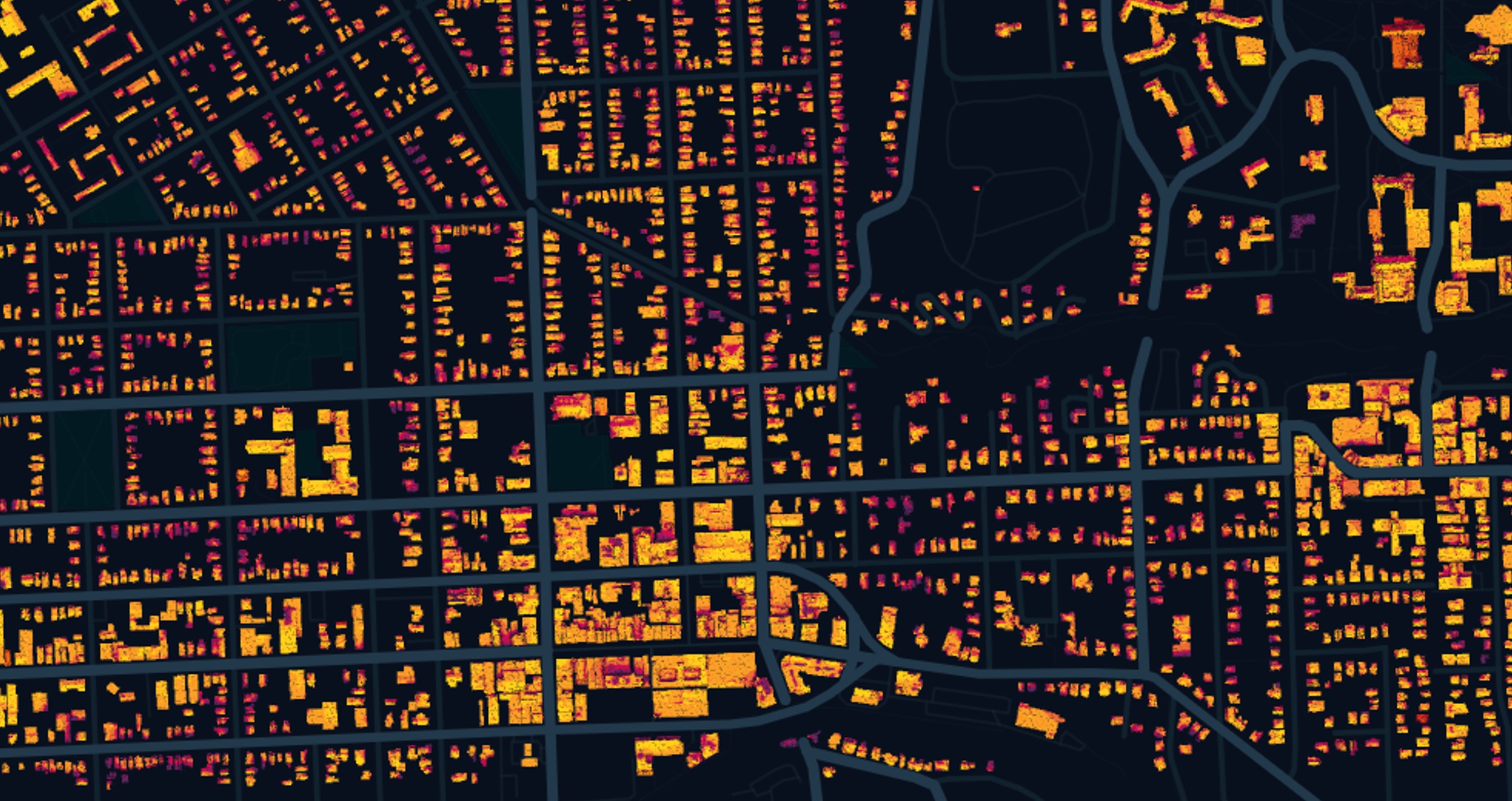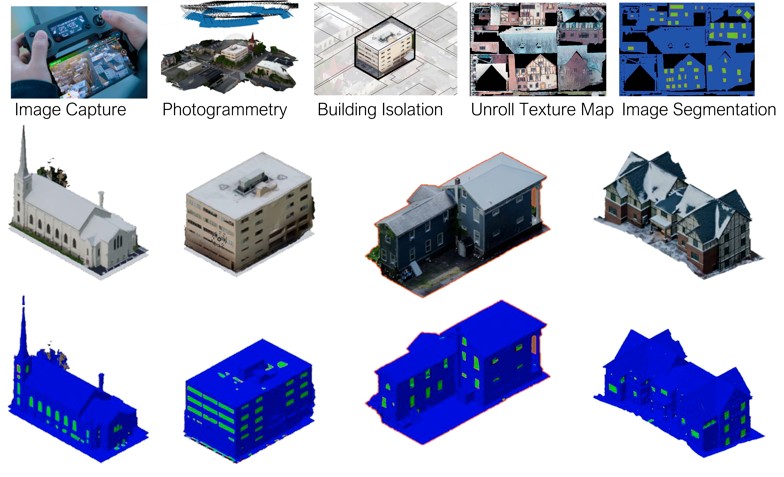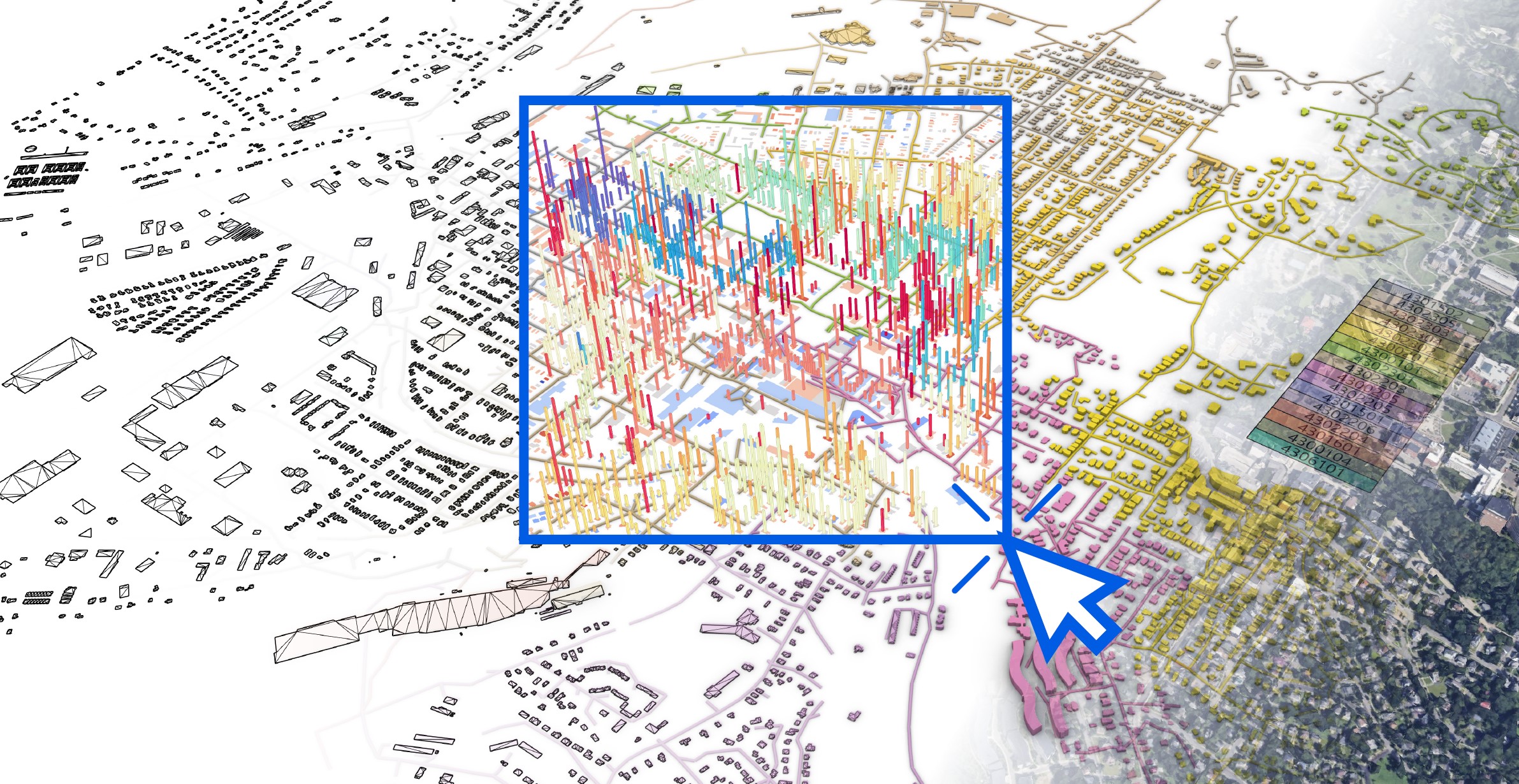EnergyAtlas.io
City-scale digital twin for urban energy insight.
Key Features

Urban Digital Twin Builder
Seamlessly unify tax records, parcels, zoning data, LiDAR, permits, and meter information into a single platform. Automated data conversion and attribute joining simplify integration, while localized archetypes and usage schedules ensure high-fidelity urban models that scale effortlessly from buildings to entire cities.

City-Scale Energy Simulation
ISO-compliant 5R1C models power hourly simulations 150x faster than traditional baselines. Generate validated forecasts of energy demand and carbon emissions at both building and district scales, enabling accurate, city-scale insights into operational energy performance with minimal data requirements.

Renewables Integration
Simulate rooftop photovoltaics using fast voxel shading and ray marching algorithms, alongside geothermal and district-scale energy networks. EnergyAtlas Renewables integrates on-site and off-site sources, providing high-resolution insights into how solar panels, wind turbines, and ground-source systems contribute to sustainable urban energy supply.

Scenario Planning & Retrofit Prioritization
Explore electrification, envelope upgrades, photovoltaics, geothermal, and district systems with lifecycle cost, payback, and incentive analyses. EnergyAtlas RetrofitEconomics enables rapid scenario planning to compare configurations at scale, empowering stakeholders to prioritize retrofit strategies with financial clarity and carbon reduction outcomes.

3D Reconstruction & Facade Texture Segmentation
FacadeScanner™ delivers photogrammetric reconstruction and computer vision-powered façade texture segmentation to extract window-to-wall ratios and material features. These workflows transform aerial imagery and street-level data into detailed 3D geometries, supporting high-fidelity digital twins and enhancing urban energy modeling accuracy.

Cross-Platform Visualization
EnergyAtlas Geospatial3D enables seamless visualization across Rhino/Grasshopper, Unity/Cesium, and React/Mapbox web platforms. With interactive 3D city models and plug-and-play interfaces, users can explore digital twins, compare scenarios, and communicate insights through accessible, cross-platform dashboards.
Modules
EnergyAtlas.DataConnect
- Hassle-free urban GIS ingest with automatic conversion & joins
- Localized DOE/RECS archetypes and high-fidelity usage schedules
EnergyAtlas.OperationalEnergy
- ISO 52016-1 5R1C hourly simulations, ~150× faster vs. traditional baselines
- Validated against EnergyPlus and measured energy; BOBYQA calibration
EnergyAtlas.Renewables
- PV potential via fast voxel shading & ray marching
- Geothermal and district energy modeling at city scale
EnergyAtlas.RetrofitEconomics
- Payback, incentives, lifecycle costs for portfolio design
- Map "lower-hanging fruit" and compare scenario mixes
EnergyAtlas.Geospatial3D
- Live connection with Rhino/Grasshopper, web, and Unity/Cesium
- FacadeScanner™ 3D reconstruction & façade texture segmentation (e.g., WWR)
EnergyAtlas.API
- RESTful endpoints for automated data, models, and results
- Develop custom tools and workflows for EnergyAtlas.io
Selected Publications
Journal of Building Performance Simulation
"A bottom-up urban building energy model for evaluating thermal load electrification measures"
Journal of Building Performance Simulation
"Scalable building reconstruction and window detection for urban building energy modelling applications"
Energy and Buildings
"Towards auto-calibrated UBEM using readily available, underutilized urban data: A case study for Ithaca, NY"
Building Simulation 2025 Conference
"Deriving high-fidelity residential building archetypes and typical usage patterns from national energy use surveys to enhance "initial guesses" for Urban Building Energy Model (UBEM) inputs"
Media & Professional Exposure
Bentley Systems
"Smart Heat: Digital twin helps college town move toward carbon neutrality. Are big cities next?"

